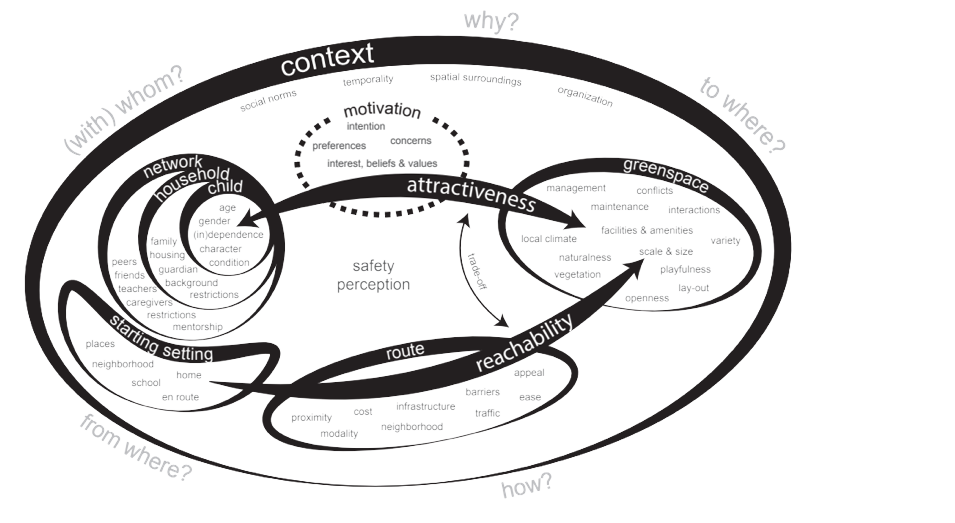City Know-hows

Access to greenspace impacts children’s physical, social, and mental health. While the factors affecting children are different from those affecting the general population, many accessibility measures use the same principles for children as they use for the general population. We present a comprehensive visual overview of factors affecting children’s access, how it can be measured across geographical contexts, and what measures remain to be developed.
Share
Target audience
City officers, children’s public health professionals and childhood public health researchers
The problem
Numerous factors affect children’s access to urban greenspaces, often distinct from those affecting the general population, including parental restrictions, limited routine activity-space, and particular preferences. Most accessibility measures, however, employ the same principles for children and the general population, and a comprehensive exploration of factors and corresponding measures remains lacking.
What we did and why
We conducted a scoping review and workshops with researchers and practitioners to identify factors affecting children’s access to greenspace, synthesize them into a conceptual model, and assess how existing accessibility measures address these factors. We focussed on children aged 6-11 years old.
Our study’s contribution
Our analysis indicates children’s access involves a trade-off between reachability, determined by the route connecting the child’s starting setting to greenspace, and attractiveness, determined by how the greenspaces adheres to the child’s, and their companions’, preferences and motivations for visiting. Safety perceptions are important throughout. Existing accessibility measures predominantly emphasize reachability, neglecting personal characteristics and motivations. Based on our findings, we propose future directions for developing children-centered accessibility metrics.
We propose a useful conceptual model of factors affecting children’s access to urban greenspace, organized into five clusters, with overarching factors and key relations depicted in the middle.
Five question for each cluster are: Access with and by whom? From where? How? To where? and Why?
Impacts for city policy and practice
Our overview of metrics can facilitate selection of suitable measures when studying spatial equity, urban planning, or environmental health. The possibilities are numerous, complementary, and depend on the aims and context of the study at hand: no one size fits all solution exists. All measures remain a simplification of reality, in which choices on what to represent should consciously be made.
Our conceptual model can foster shared understanding of factors affecting children’s access to urban greenspace, sparking discussions and exchange of experiences and advise as to how to enhance or measure children’s access to urban greenspace.
Further information
Full research article:
Children’s access to urban greenspace: a survey of factors and measures by Roos Teeuwen, Alessandro Bozzon & Achilleas Psyllidis.
Related posts

Looking into an urban transformation of a low-income settlement in Maputo, Mozambique, through the behaviours and experiences of pedestrians, shows that physical interventions to the walking environment contribute to the ability of diverse individuals to exercise their Right to the City.

We highlight the beneficial interactions of “sensescapes”, the combination of soundscapes and natural landscapes, on psycho-physiological health. Our work shows the significance of interdisciplinary urban design and planning in harnessing these benefits – to enhance health and urban sustainability through the integration of nature’s influences on the body and mind.

Understanding of the influence of local political actors helps to highlight where their influence is limited, particularly by national-level housing policy, which in the UK is focused on housing numbers, rather than quality of new homes, as well as financial viability and public opinion. Understanding this can help to build trust in the political processes of decision-making and inform interventions for healthier place-making.